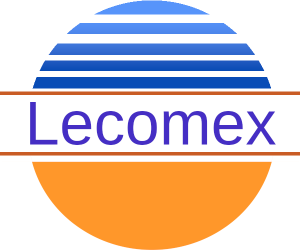So I was messing around the other day, trying to stake some Solana through my browser, and man, it felt like I was stepping into a sci-fi flick with no manual. Seriously, the whole idea of dApp connectivity with wallets can be a bit of a head-scratcher. You click, authorize, wait, and then… nothing? Or worse, you get tangled in endless transaction approvals. Wow! It’s like, why should something that’s supposed to simplify crypto actually make me second guess my life choices?
At first glance, staking Solana seems straightforward—lock up your tokens, earn rewards, rinse, repeat. But the reality? It’s a maze of browser extensions, wallet integrations, and varying dApp behaviors that can trip up even seasoned users. My gut feeling told me there’s more under the hood, so I dug in a bit deeper.
Here’s the thing. Not all wallet extensions play nice with every dApp. Some are smooth as butter; others crash or freeze mid-transaction. This inconsistency is frustrating, especially when you’re trying to maximize your staking rewards without having to reset your browser every other minute.
Now, I’m no stranger to crypto wallets, but honestly, I’ve had my share of headaches before discovering some tools that just get it right. One wallet extension I’ve been using lately offers a surprisingly seamless Solana staking experience. You might want to check this out—it’s the kind of quality that makes you wonder why more folks aren’t talking about it.
Anyway, let me walk you through what I’ve learned about dApp connectivity and staking rewards on Solana, and why having the right browser extension can be a total game-changer.
First off, connecting your wallet to a Solana dApp isn’t always as plug-and-play as it sounds. You need that bridge—that handshake between your wallet and the decentralized app—to be quick and secure. But what really bugs me is when that handshake feels more like a cold shoulder. Some extensions lag or throw errors when approving staking transactions, and it’s easy to lose patience.
On the flip side, a well-designed wallet extension can make staking feel almost effortless. I stumbled upon the Solflare Wallet Extension recently, and it blew me away. It’s like the developers actually thought about the user experience—fast connections, intuitive staking interfaces, and clear feedback on rewards.
Initially, I thought staking was just about locking your tokens and waiting. But then I realized the subtle complexities: the timing of rewards, unbonding periods, and even how network fees can eat into your gains. Oh, and by the way, some dApps offer extra incentives if you stake through their platform rather than directly via the wallet. That threw me for a loop.
Something felt off about the way some staking dashboards reported rewards too—sometimes delayed, sometimes confusing. It made me wonder: Are all these numbers accurate? Or is it just a UX design issue? Actually, wait—let me rephrase that. It’s probably a bit of both. The Solana network is fast, but the way data propagates to dApps can vary.
Here’s a quick story. I was staking through a lesser-known extension, and for a whole week, my rewards dashboard showed zero earnings. I kept refreshing, thinking maybe I missed something. Then I switched to the Solflare Wallet Extension and bam—my actual accrued rewards popped up instantly. That’s when I realized the wallet’s integration with the dApp’s backend matters just as much as the staking itself.
Trust me, if you’re hunting for staking rewards on Solana, the last thing you want is to worry whether your wallet extension is properly syncing. With the Solflare extension, the communication between wallet and dApp feels rock solid. You approve a stake, it processes quickly, and you can track your rewards without breaking a sweat.

But staking isn’t just about locking tokens—it’s also about strategy. When I first started, I thought staking was a set-it-and-forget-it deal. Nope. You gotta keep an eye on validator performance, network health, and even potential slashing risks. Yeah, slashing—that term always makes my stomach drop a little.
Validators on Solana vary in reliability. Some are rockstars, producing blocks consistently; others might miss or even misbehave, which can cost you part of your staked SOL. So, choosing where to delegate your tokens is a very very important step. The wallet extension I mentioned has this nifty feature where you can easily browse validators, their uptime stats, and commission rates right from the interface. That kind of transparency is rare.
On one hand, you want the highest rewards, which often means picking validators with lower commissions but solid performance. Though actually, sometimes paying a bit more in commission is worth it if it means peace of mind. It’s a balance, and the wallet’s UX helps you weigh those options without diving into a dozen different websites.
Okay, so check this out—some staking dApps even let you compound rewards automatically, which sounds fancy but really just means your earnings get staked again to boost future returns. This auto-compounding is a killer feature for long-term holders. But heads up, not every wallet extension supports this directly. You might have to manually claim and restake your rewards, which can be tedious and cost you extra fees.
Really? Yeah, fees. It’s easy to overlook transaction costs when you’re focused on rewards, but on Solana, these fees are usually low—thankfully. Still, if you’re claiming rewards every day, those lamports add up. A good browser wallet extension will batch or optimize these processes to minimize waste.
Now, I’m biased, but the overall staking experience improves dramatically when your wallet extension feels native—like an extension of your crypto self rather than a clunky add-on. It reduces friction, builds trust, and frankly makes you more likely to stake bigger amounts without second-guessing.
To wrap this up—though I’m not really good at wrapping things—the whole Solana staking ecosystem is evolving fast. dApp connectivity and wallet extensions are at the heart of it. If you want a hassle-free way to stake and track rewards, definitely give the Solflare Wallet Extension a try. It’s not perfect, but it’s about as close as I’ve found to making staking feel less like the wild west and more like a smooth ride.
And hey, if you’re still on the fence, remember that every staking experience is personal. What works for me might not be your jam. But at least now you’ve got a solid place to start.

